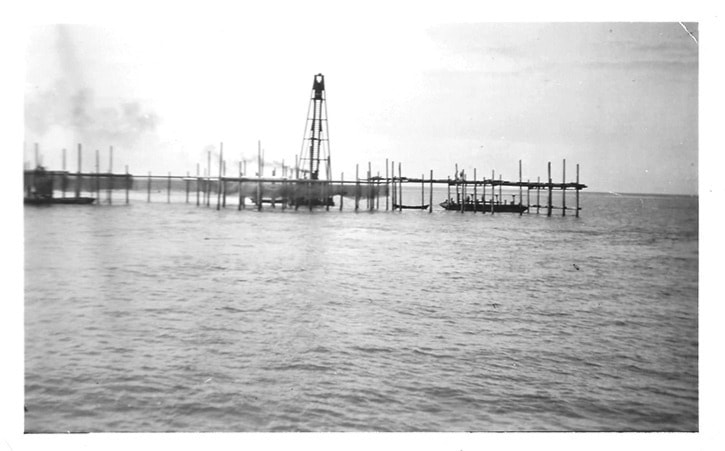Every year, beginning with the first traps installed in 1904 and right up to 1958, views like this were part of the Sooke and Juan de Fuca seascape.
In the spring, crews got back to work, ready to assemble the immense fishtrap contraptions and install them along the coastline.
J.H. Todd & Sons were the leading initiators of the industry in B.C. waters, and first installed a wharf at the foot of Murray Road.
While several other companies came as well, in time it became a joint operation of Todd and a group from Port Townsend who amalgamated to set up a large operation at the foot of Maple. In 1922 this became Sooke Harbour Fishing & Packing Company.
Piledrivers, packers, scows, barges, dories, a webshed, tarring operations and for a time, even a cannery, along with a crew cookhouse, filled the waterfront at the foot of Maple.
Eventually, there were generally five traps set each year, the Beechey Head trap, the Sooke trap near Secretary Island, the Gordon trap at Gordon’s beach, the Otter Point trap and the Coal Creek trap (Kirby Creek).
The fence, or row of Douglas-fir pilings that were driven into the ocean floor, could extend as much as half a mile out into the Strait of Juan de Fuca. This was called “the lead” and with wire installed, was designed to lead the salmon outward. There was no escape possible, and the fish were led into a webbed maze-like structure called “the Pot and Spiller.”
Twice weekly a fishpacker would arrive alongside for “the lift” and the salmon would be brailed into the hold of the packer, and transported to fresh markets and canneries. In order to discourage poaching, there was a watchman (usually a watch-couple) housed nearby. On the Coal Creek trap, two tiny watchman shacks were perched right on top of the spiller platform.
Living right over the water, with the tender bringing supplies weekly, might seem a dream job, but it had its hazards. In October 1945 Jim Walker, his wife Jean and her kid brother Fred Stange were living on Coal Creek trap, nearing the end of the season, when the traps were due to be dismantled so not to be destroyed by winter storms. This trap was nearly 2,800 feet long and did not touch the beach.
Years later, Jean wrote “It was Sunday evening, I was baking cookies in the cook shack and I looked out the shack window and saw a solid wall of white water driving at us across the Strait. I hollered for Jim … he and Fred ran out and crawled on all fours to lash the two shacks down. By that time the whole ocean was a solid screaming horror. We had one life jacket and two dories. The seas picked up the nearest dory and in seconds it was matchwood. The fellows put the life jacket on me and tied me to a pile.”
“When the storm abated enough we crawled across to the remaining dory. The waves were about fourteen feet high … after two hours of steady pulling we reached the beach ... the blow was clocked at 97 mph. Our trap survived but the others were pretty well torn to pieces … we were lucky,” Jean remembered.
Today, looking at the parking area created on lower Maple where the fishtraps cookhouse used to stand, I thought perhaps it’s fitting that the trailers that transport sports fishing vessels are safely stored there while their masters go out to brave the adventure of the ocean.
•••
Elida Peers is the historian at Sooke Region Museum.
